What You Need to Know About PRP for Rotator Cuff Tear
Am I a Candidate?A torn rotator cuff, a common injury affecting the shoulder, is traditionally treated with surgery, especially when conservative treatments like physical therapy and medications fail. Surgical options include arthroscopic repair, open repair, and mini-open repair.
These surgeries aim to reattach the torn tendon to the bone, often using sutures and anchors, and sometimes requiring tendon grafts. Post-surgery recovery involves extensive rehabilitation to restore strength and mobility.
However, surgery comes with risks such as infection, nerve damage, and prolonged recovery periods. An emerging, less invasive alternative is platelet-rich plasma (PRP) injections. PRP treatment involves drawing a small amount of the patient’s blood, concentrating the platelets, and injecting this enriched plasma into the injured rotator cuff.
There is also the risk of a high retear rate over the next 10 years, estimated about 1 in 4, which then increases with patients over 50!
Platelets release growth factors that can enhance tissue healing and reduce inflammation. PRP injections offer a safer, faster recovery and have shown promising results in improving pain and function in rotator cuff injuries. This makes PRP a compelling option for patients seeking to avoid the risks and downtime associated with surgery.
How Do Rotator Cuffs Tear?
Rotator cuff tears can result from various causes, broadly categorized into acute injuries and degenerative changes. Acute injuries typically occur due to a sudden, forceful event, such as lifting a heavy object, falling on an outstretched arm, or experiencing a sudden jerking motion. These traumatic tears are more common in younger individuals or athletes involved in contact sports.
Rotator cuff tears are actually pretty common in many asymptomatic patients. We all have and live with cuff tears without any problems. The population prevalence of full-thickness tears is 22.2%, which increased with age. Which means 1 in 4 people walking around with no shoulder pain are likely to have a rotator cuff tear and not know it!
Degenerative tears, on the other hand, develop gradually over time and are more common in older adults. These tears are often due to repetitive stress from activities that involve overhead motions, such as painting, swimming, or throwing sports.
Age-related factors like decreased blood supply to the tendons and the natural wear and tear of tissues also contribute to the degeneration. Additionally, certain anatomical factors, such as bone spurs, can impinge on the tendons, leading to wear and eventual tearing.
Other risk factors include smoking, which impairs blood flow and tendon healing, and genetic predisposition, as rotator cuff tears can run in families. Understanding these varied causes is essential for effective prevention and treatment strategies for rotator cuff injuries.
Why You Should Avoid Rotator Cuff Repair Surgery
There are over 460,000 rotator cuff surgeries each year in the United States, and there are numerous complications.
Complications for rotator cuff repair surgery include:
- Nerve injury – One study demonstrated that 1 – 2% of patients who had shoulder surgeries had nerve damage (2)
- Infection
- Deltoid detachment
- Retear
- Loss of range of motion
When you consider these things, also understand that research has demonstrated that 75% of rotator cuff repair surgeries offer no significant benefit over no surgery at all.
Rotator cuff surgery recovery time is extensive and can take anywhere from six months to a year to completely heal. Significant pain and intense physical therapy are generally part of surgery recovery.
Factors Leading to Failed Rotator Cuff Surgery
Here are some of the factors that lead to the failure of rotator cuff surgery:
- Age: Older patients tend to have poorer outcomes due to reduced healing capacity and the higher likelihood of degenerative changes in the tendons.
- Tendon quality: Poor tendon quality, characterized by degeneration or fraying, can hinder the healing process and lead to incomplete repairs or re-tears.
- Rotator cuff tendon characteristics: Tendons with extensive damage, large tears, or retracted tears are more challenging to repair successfully and have higher failure rates.
- Acute or chronic tears: Chronic tears, which have been present for a longer time, often involve more significant tissue damage and muscle atrophy, making surgical repair more difficult and less likely to succeed.
- Bone quality: Poor bone quality, such as that seen in osteoporotic patients, can affect the fixation of surgical anchors, leading to repair failures.
- Tobacco use: Smoking impairs blood flow and tendon healing, significantly increasing the risk of surgical failure and complications.
- Medications: Certain medications, particularly corticosteroids and nonsteroidal anti-inflammatory drugs (NSAIDs), can negatively affect tendon healing and increase the risk of repair failure.
Traditional Non-Surgical Alternatives: Why Cortisone Injections Don’t Always Work
Cortisone injections have long been used as a non-surgical treatment for rotator cuff injuries to reduce inflammation and alleviate pain. This approach can provide temporary relief and improve function, potentially delaying the need for surgery. However, cortisone injections don’t always lead to successful outcomes for several reasons.
Health Risks Related to Cortisone
While cortisone can be effective in reducing inflammation, it comes with several health risks:
- Tendon weakening: Repeated cortisone injections can weaken the tendon, increasing the risk of further tears.
- Joint damage: Over time, cortisone can degrade joint structures, leading to cartilage damage and worsening joint health.
- Systemic effects: Cortisone can have systemic side effects, including elevated blood sugar levels, especially in diabetic patients, and potential impacts on adrenal function.
High Risk of Needing Surgery
Despite its use, cortisone doesn’t always prevent the need for surgery:
- Temporary relief: Cortisone often provides only short-term pain relief without addressing the underlying tendon damage, which may continue to progress.
- Masking symptoms: Pain relief can mask the severity of the injury, leading patients to delay necessary surgical intervention until the damage is more severe and harder to repair.
- Ineffective for severe tears: In cases of significant or complete tendon tears, cortisone is unlikely to be effective, and surgical repair becomes the necessary option for restoring function.
How Does PRP for a Torn Rotator Cuff Work?
PRP therapy involves using the patient’s own blood to promote healing in injured tissues, including torn rotator cuffs. The process and its effects are detailed in the following points:
- Blood draw and preparation: A small amount of the patient’s blood is drawn and placed in a centrifuge to separate the platelets and plasma from other blood components.
- Concentration of platelets: The centrifugation process concentrates the platelets, which are then suspended in a small volume of plasma, creating the PRP solution.
- Injection into the injured area: The PRP solution is injected directly into the site of the rotator cuff tear, often guided by ultrasound to ensure precise placement.
- Release of growth factors: Platelets in PRP release various growth factors and cytokines, such as platelet-derived growth factor (PDGF), transforming growth factor-beta (TGF-β), and vascular endothelial growth factor (VEGF), which are crucial for tissue repair.
- Stimulation of healing processes: These growth factors stimulate cellular processes such as cell proliferation, migration, and differentiation, which are essential for tissue regeneration and repair.
- Enhanced collagen production: PRP promotes the synthesis of collagen, a key structural protein in tendons, helping to rebuild and strengthen the damaged rotator cuff.
- Reduction of inflammation: PRP can modulate the inflammatory response, reducing pain and swelling, which helps create a more favorable healing environment.
- Improved blood supply: The angiogenic factors in PRP help improve blood supply to the injured area, enhancing nutrient delivery and waste removal, which supports healing.
All of the above mentioned attributes of PRP are great, but let’s examine the evidence and research in human patients with PRP compared to traditional surgery:
On Partially Torn Tendons Of Your Rotator Cuff:
This study looked at outcomes comparing PRP with rotator cuff repair surgery and found that PRP was just as good as surgery plus patients improved much faster, with less overall pain and same function.
To quote this study, “Both surgical repair and platelet-rich plasma injection into the tear site are equally effective in the treatment of high-grade intrasubstance partial-thickness rotator cuff tears, while platelet-rich plasma provides significantly shorter recovery time.”
What Might Disqualify You from PRP Injections?
While platelet-rich plasma (PRP) treatment is a promising treatment for rotator cuff tears, it may not be suitable for all patients. Our highly trained physicians at Centeno-Schultz Clinic can assist in determining your candidacy but here are things we look at during your evaluation as well as modifiable risk factors for failure plus how to improve on these for procedural success.
- Retracted tendon: In cases where the torn tendon has retracted significantly, the physical gap between the tendon ends can be too large for PRP to bridge. Usually anything over 1-2 cm gap. Severe retraction often requires surgical intervention to reattach the tendon properly.
BUT ortho-biologics can still be extremely beneficial even after surgery
- Assist in bone integration of the tendon
- Reduces retear rates long term when added either at time of surgery or shortly after
- Accelerate the recovery time
- Massive tears: Large or massive rotator cuff tears, involving multiple tendons or extensive tissue damage, may not respond well to PRP alone.
On Fully Torn Tendons / Massive Tears:
In 2020 we published our randomized control trial looking at this for patients who wanted to avoid big surgery. We compared outcomes to 3 months of physical therapy and all conservative options then treated 50+ patients over the last 8+ years and followed them over time.
What we found out was that 89% of patients improved significantly, and these patients also had MRI evidence of tendon healing and improvement! Thus, over 89% of patients avoided massive surgical reconstruction.
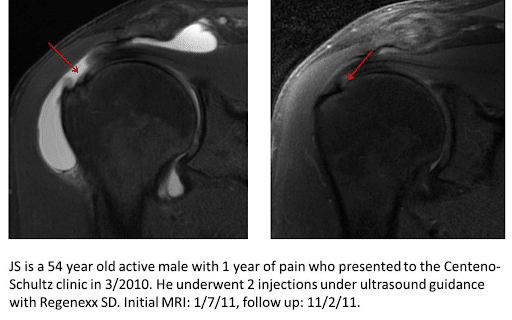
We have been treating tendon tears for almost 20 years and giving patients good viable alternatives to traditional medicine with orthobiologics!
Relative Risk Factors For Treatment Failures
- Poor overall health: Patients with systemic health issues, such as uncontrolled diabetes, severe cardiovascular disease, or immunocompromised states, may have a reduced healing capacity, making PRP less effective.
Improving blood sugar control with dietary changes, such as eating a balanced diet in meat, vegetables, nuts, and seeds with little starch. Avoid sugary foods and all processed food. The healthier you are, the better your body will respond! To learn more, please read Nutrition 2.0 here. - Certain medications: Patients taking medications that interfere with healing, such as corticosteroids or high doses of NSAIDs, may not be good candidates for PRP treatments. These medications can impair the effectiveness of the treatment.
These medications need to be avoided for a few weeks prior to treatment and then refrain for at least a few weeks after treatment. - Previous failed treatments: Patients who have already undergone multiple unsuccessful treatments for rotator cuff tears, including other biologic therapies, may be less likely to benefit from PRP. But not all PRP is created equally. While many PRP treatments can fail, there is a common theme with most of these:
- Too low of Platelet Dose: Amount of blood drawn is too low to produce the right concentration needed to have a good outcome
- Route of injection: PRP is a precision medicine and needs precision guidance. Many times, if your doctor just injected via the “feel and poke” method, then the platelets may likely not get to where the doctor was intending it to.
- Single injection site: Many doctors use PRP like a steroid injection and only inject a single place, such as into the joint space BUT to utilize maximal improvement, multiple sites need to be injected.
What to Avoid Before Your PRP Procedure
Patients preparing for platelet-rich plasma (PRP) treatment should avoid certain medications and actions to ensure optimal results. Here are the key things to avoid:
- NSAID painkillers: Avoid nonsteroidal anti-inflammatory drugs (NSAIDs) such as ibuprofen and aspirin for at least a week before treatment. These medications can affect the inflammatory process, which is crucial for PRP efficacy.
- Oral analgesic painkillers (except for acetaminophen): Refrain from taking oral analgesic painkillers like ibuprofen or naproxen. Only acetaminophen (Tylenol) is recommended for pain relief, as it does not interfere with platelet function and the healing process.
- Ointments: Discontinue the use of topical ointments or pain-relief creams, which can mask symptoms and potentially interfere with the treatment area.
- Ice: Avoid icing the injured area for at least 48 hours before the PRP injection. Cold therapy can reduce the inflammatory response, which is necessary for PRP to work effectively.
- Putting too much stress on the rotator cuff: Minimize stress on the rotator cuff by keeping the shoulder at an elevated angle of less than 45 degrees. Overexertion can exacerbate the injury and impede the healing process.
Can PRP Injections Fail?
While platelet-rich plasma (PRP) treatment can be effective for healing torn rotator cuffs, several factors can lead to unsuccessful outcomes, especially if the injections are not administered by experienced professionals like those at the Centeno-Schultz Clinic.
Here are the key possibilities of failure:
- PRP is often seen as a long-term procedure: PRP treatment usually requires a series of injections over time to achieve optimal results. Patients might not see significant improvement after just one injection and may need multiple sessions to stimulate sufficient healing.
- Inaccurate identification and injection of the injury site: Successful PRP treatment depends heavily on accurately identifying and injecting the exact point of injury in the rotator cuff. Inexperienced or poorly equipped clinics might fail to use precise imaging guidance (like ultrasound) to target the injured area accurately, leading to ineffective treatment.
- Quality of the PRP solution: The efficacy of PRP treatment can be compromised by the quality of the PRP solution itself. Variability in preparation techniques, platelet concentration, and the presence of growth factors can affect the healing process. Clinics that do not follow standardized protocols may produce lower-quality PRP, reducing the treatment’s effectiveness.
Regenexx PRP for Torn Rotator Cuffs
The Regenexx SCP (super-concentrated platelets) procedure for rotator cuff tears is a non-surgical alternative that uses precise, image-guided injections of platelet-rich plasma (PRP) to accurately place growth factors into the damaged tissue in your shoulder.
Regenexx procedures can utilize either platelet-rich plasma or your own bone marrow concentrate (containing stem cells) to help you avoid rotator cuff repair surgery.
Regenexx PRP injection procedures are nonsurgical alternatives to rotator cuff repair and can offer significant benefits over the typical surgical repair of torn rotator cuffs:
- Do not involve invasive surgery
- No extensive downtime for most patients
- Minimal time away from work
- Significant post-procedure pain reduction
- Improved function of the shoulder joint
Why Regenexx PRP Mixtures Are Superior
In most clinics that offer PRP therapies, the method of developing PRP involves removing a patient’s blood and running it through a simple bedside centrifuge machine to separate the plasma and concentrate the blood platelets, which are then immediately extracted and used as the injectate.
These devices are not great at getting rid of unfavorable cells from the resulting mixture. Our lab tests show that white and red blood cells have an inhibiting effect on the same stem cells the platelets are attempting to stimulate and might cause excessive inflammation following the injection.
Our PRP is purer, concentrated, and customizable because it is produced in a laboratory setting by experienced technicians who can separate and concentrate all the blood’s good components and remove the unfavorable ones.
Regenexx procedures at CSC offer customizable cell concentrations ranging from 6X to 20X. The 20X concentration of stem cells from bone marrow is notably higher than non-Regenexx providers typically achieve. CSC has its own laboratory that processes the PRP. Due to its high levels of platelets, the PRP has an amber color (see image below).
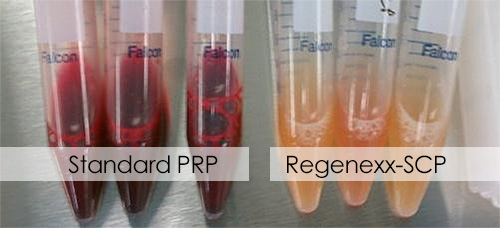
How Long Should I Go Through Regenexx Treatment?
Regenexx PRP injections are often considered superior to standard PRP treatments due to their tailored approach and comprehensive protocol. Here are some key points comparing Regenexx treatment to standard PRP:
Length of Treatment:
- Regenexx PRP: The treatment plan for Regenexx PRP is typically more structured and extended, often involving a series of injections spaced out over weeks or months. This allows for a sustained healing response.
- Standard PRP: Standard PRP treatments might involve fewer injections, often administered as a one-time or short-term solution, which may not be sufficient for optimal healing in all patients.
Number of Injections:
- Regenexx PRP: The protocol usually includes multiple injections, tailored to the patient’s specific condition and response to treatment. This approach ensures that the healing process is continuously stimulated.
- Standard PRP: Many standard PRP protocols involve just one or two injections, which might not provide the ongoing stimulus needed for more severe or chronic injuries.
Time-Frame for Results:
- Regenexx PRP: Patients may start to notice improvements within a few weeks, but the full benefits are often observed over several months as the regenerative process progresses. This gradual improvement is due to the cumulative effect of multiple injections.
- Standard PRP: Results from standard PRP treatments can be more variable, with some patients experiencing initial relief but not seeing long-term benefits. The limited number of injections may not be enough for sustained recovery.
Rehabilitation And Regenexx
The need for additional rehabilitation following Regenexx procedures largely depends on the extent and nature of the patient’s injury. Here are key considerations:
Extent of the Injury:
- Severe or chronic injuries: Patients with severe or chronic rotator cuff injuries are more likely to require comprehensive rehabilitation programs. Extensive damage often necessitates more structured physical therapy to regain full function and strength.
- Mild to moderate injuries: For less severe injuries, the need for additional rehabilitation may be less intensive. However, some level of guided exercise and therapy is typically recommended to ensure optimal recovery.
Rehabilitation Recommendations:
- Customized rehabilitation plans: Regenexx typically incorporates personalized rehabilitation plans tailored to the specific needs of the patient. These plans are designed to complement the regenerative process initiated by the PRP injections.
- Gradual progression: Rehabilitation programs usually start with gentle range-of-motion exercises and gradually progress to strengthening and functional training. This helps to rebuild muscle strength and improve joint stability without overloading the healing tissues.
- Professional guidance: It is highly recommended that patients work with physical therapists who are familiar with the Regenexx protocols. These professionals can provide appropriate exercises, monitor progress, and adjust the program as needed to maximize recovery.
Benefits of Rehabilitation:
- Enhanced healing: Rehabilitation exercises help to stimulate blood flow and tissue repair, enhancing the effects of the PRP injections.
- Improved functionality: Targeted rehabilitation can improve shoulder function, reduce pain, and restore normal movement patterns, which is crucial for long-term recovery.
- Prevention of re-injury: A structured rehabilitation program helps to strengthen the rotator cuff and surrounding muscles, reducing the risk of future injuries.
Why Centeno-Schultz Clinic Is the Best Facility for Your PRP Treatment
Centeno-Schultz Clinic (CSC) and its doctors offer several distinct advantages in providing top-tier medical treatment, particularly in the realm of PRP injections:
Experience And Precision In Administering PRP Treatments:
- Specialized expertise: The doctors at CSC have extensive experience and expertise in administering PRP injections for a wide range of musculoskeletal conditions, including rotator cuff injuries. Their specialized training ensures precise delivery of the PRP solution to the targeted area of the shoulder.
- Individualized treatment plans: CSC doctors tailor PRP treatments to each patient’s unique needs, considering factors such as the extent of the injury, medical history, and lifestyle factors. This personalized approach maximizes the effectiveness of the treatment and promotes optimal healing.
Advanced Technology for Procedures:
- State-of-the-art imaging: CSC is equipped with advanced imaging technology, such as ultrasound and fluoroscopy, which allows for real-time visualization and precise guidance during PRP injections. This ensures accurate placement of the PRP solution, enhancing treatment efficacy.
- In-house laboratory: CSC has an in-house laboratory facility for processing and preparing PRP solutions. This ensures the quality and consistency of the PRP product, optimizing its regenerative properties for therapeutic use.
A Holistic Approach to Treatment:
- Comprehensive evaluation: CSC doctors conduct thorough evaluations to assess not only the specific injury but also any underlying contributing factors. This holistic approach helps to identify and address biomechanical imbalances, lifestyle factors, and other issues that may impact the success of PRP treatment.
- Integrated care: CSC offers a multidisciplinary approach to patient care, collaborating with other healthcare professionals such as physical therapists, nutritionists, and pain management specialists. This integrated approach ensures that patients receive comprehensive support throughout their healing journey, optimizing outcomes and long-term recovery.
Consider the Benefits of Regenexx to Heal Your Torn Rotator Cuff
In summary, CSC and Regenexx offer a comprehensive approach to treating torn rotator cuffs, providing patients with effective alternatives to surgery. CSC doctors administer Regenexx PRP injections with precision, targeting the exact site of the rotator cuff injury using advanced imaging technology.
Treatment plans are personalized to each patient’s unique needs, ensuring that the PRP treatment is optimized for their specific condition and circumstances. CSC takes a holistic approach to patient care, addressing underlying biomechanical issues and collaborating with other healthcare professionals to provide comprehensive support throughout the healing process.
With the expertise of CSC and the regenerative properties of Regenexx PRP injections, many patients can avoid the need for surgery altogether, achieving significant pain relief, improved function, and enhanced quality of life without the risks and downtime associated with surgical procedures.
Learn more about how you can heal your torn rotator cuff without surgery. Contact us for an appointment today!
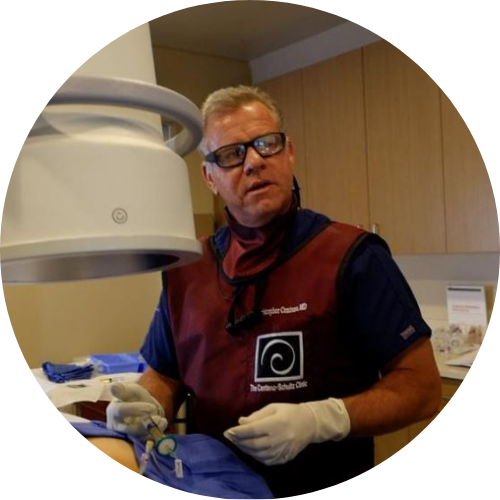
Christopher J. Centeno, MD
Christopher J. Centeno, M.D. is an international expert and specialist in Interventional Orthopedics and the clinical use of bone marrow concentrate in orthopedics.
Dr. Centeno is one of the few physicians in the world with extensive experience in the culture expansion of and clinical use of adult bone marrow concentrate to treat orthopedic injuries. His clinic incorporates a variety of revolutionary pain management techniques to bring its broad patient base relief and results. Dr. Centeno treats patients from all over the US who travel to Colorado to undergo innovative, non-surgical treatments. Dr. Centeno has chaired multiple international research-based conferences. He also maintains an active research-based practice, with multiple publications listed in the US National Library of Medicine. Dr. Centeno has also served as editor-in-chief of a medical research journal dedicated to traumatic injury.
Dr. Centeno trained at the Baylor College of Medicine, Texas Medical Center, and the Institute for Rehabilitation Research. He hails from both Florida and New York and currently resides in Boulder, Colorado with his wife and three children.
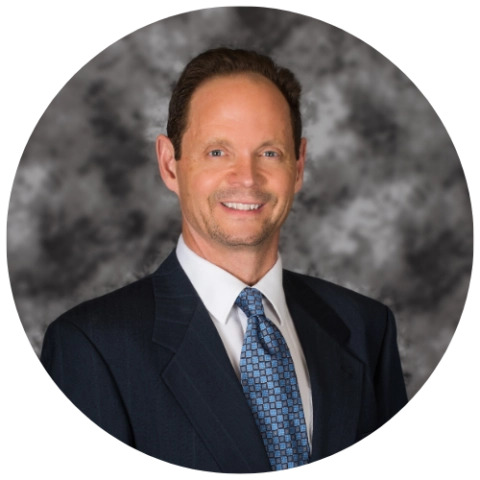
John Schultz, MD
John R. Schultz M.D. is a national expert and specialist in Interventional Orthopedics and the clinical use of bone marrow concentrate for orthopedic injuries. He is board certified in Anesthesiology and Pain Medicine and underwent fellowship training in both. Dr. Schultz has extensive experience with same day as well as culture expanded bone marrow concentrate and sees patients at the CSC Broomfield, Colorado Clinic, as well the Regenexx Clinic in Grand Cayman. Dr. Schultz emphasis is on the evaluation and treatment of thoracic and cervical disc, facet, nerve, and ligament injuries including the non-surgical treatment of Craniocervical instability (CCI). Dr. Schultz trained at George Washington School of…
Read more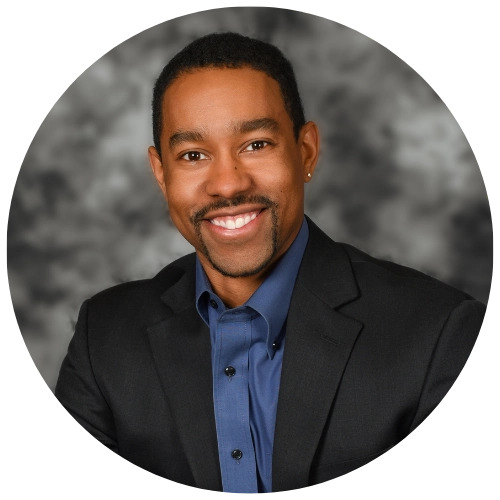
John Pitts, M.D.
Dr. Pitts is originally from Chicago, IL but is a medical graduate of Vanderbilt School of Medicine in Nashville, TN. After Vanderbilt, he completed a residency in Physical Medicine and Rehabilitation (PM&R) at Emory University in Atlanta, GA. The focus of PM&R is the restoration of function and quality of life. In residency, he gained much experience in musculoskeletal medicine, rehabilitation, spine, and sports medicine along with some regenerative medicine. He also gained significant experience in fluoroscopically guided spinal procedures and peripheral injections. However, Dr. Pitts wanted to broaden his skills and treatment options beyond the current typical standards of care.
Read more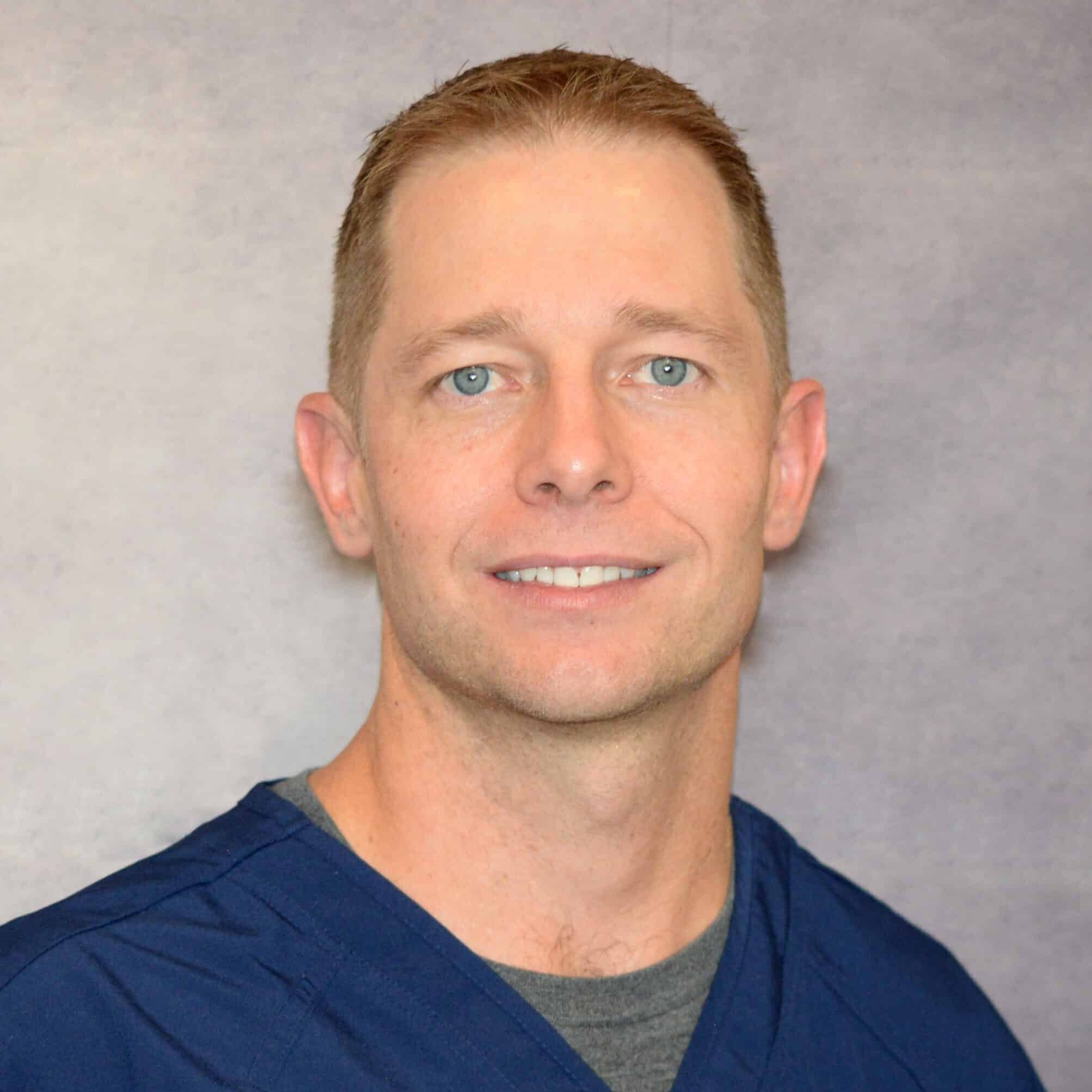
Jason Markle, D.O.
Post-residency, Dr. Markle was selected to the Interventional Orthopedic Fellowship program at the Centeno-Schultz Clinic. During his fellowship, he gained significant experience in the new field of Interventional Orthopedics and regenerative medicine, honing his skills in advanced injection techniques into the spine and joints treating patients with autologous, bone marrow concentrate and platelet solutions. Dr. Markle then accepted a full-time attending physician position at the Centeno-Schultz Clinic, where he both treats patients and trains Interventional Orthopedics fellows. Dr. Markle is an active member of the Interventional Orthopedic Foundation and serves as a course instructor, where he trains physicians from around the world.
Read more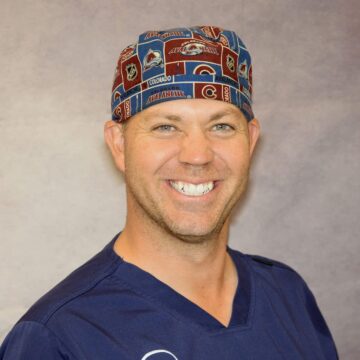
Brandon T. Money, D.O., M.S.
Dr. Money is an Indiana native who now proudly calls Colorado home. He attended medical school at Kansas City University and then returned to Indiana to complete a Physical Medicine and Rehabilitation residency program at Indiana University, where he was trained on non-surgical methods to improve health and function as well as rehabilitative care following trauma, stroke, spinal cord injury, brain injury, etc. Dr. Money has been following the ideology behind Centeno-Schultz Clinic and Regenexx since he was in medical school, as he believed there had to be a better way to care for patients than the status quo. The human body has incredible healing capabilities…
Read moreAm I a Candidate?
To answer this question, fill out the candidate form below to request a new patient evaluation, and a patient advocate will reach out to you to determine your next steps. Your one-hour, in-office or telemedicine evaluation will be with one of the world’s experts in the field of Interventional Orthopedics.